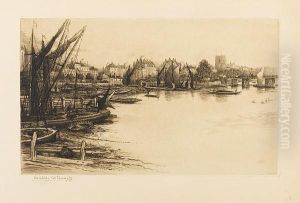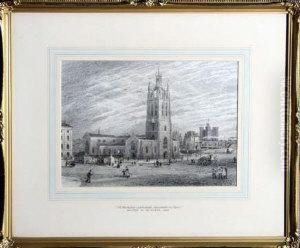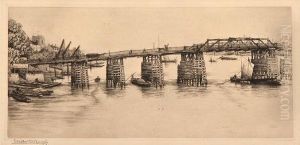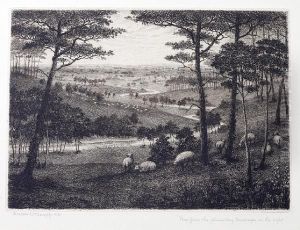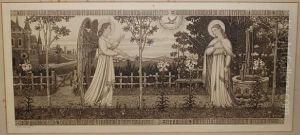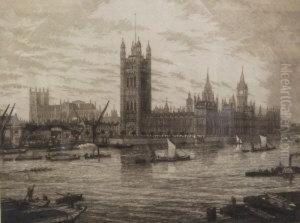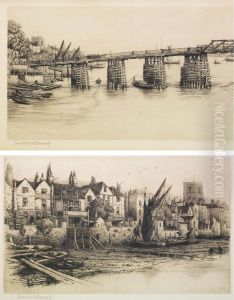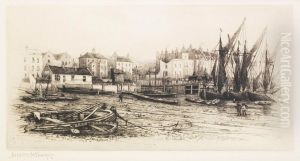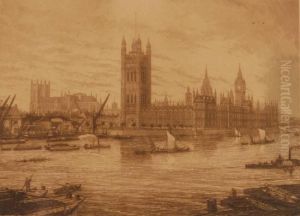Walter William Burgess Paintings
Walter William Burgess was an English artist, born in 1844 in Chelsea, London. He was known for his watercolor paintings and etchings, particularly capturing urban scenes, landscapes, and architectural subjects with a delicate and detailed touch. Burgess was educated in his craft at the National Art Training School, which is now known as the Royal College of Art. His training there would have emphasized the Victorian values of precision and a close adherence to nature, which were evident in his works.
Throughout his career, Burgess was an active member of the artistic community. He was associated with the Royal Society of British Artists and became a member of the Royal Institute of Painters in Water Colours in 1884. Burgess was also involved with the Society of Painter-Etchers, reflecting his interest and proficiency in the medium of etching.
Notably, Burgess was a part of the Etching Revival, a movement in the late 19th century that sought to re-establish etching as a legitimate form of fine art rather than just a method of reproduction. His etchings often depicted the everyday life of London and the changing urban landscape of the period, capturing the transition from the Victorian to the Edwardian era. His works exhibit a combination of technical skill and an eye for social detail that make them valuable records of the time.
Burgess exhibited at various institutions throughout his career, including at the Royal Academy and the Royal Institute of Painters in Water Colours. His works were well-received, earning him a reputation as a skilled watercolorist and etcher.
Despite his contributions to British art, particularly in the realm of watercolors and etchings, Walter William Burgess did not achieve the same level of lasting fame as some of his contemporaries. He passed away in 1908, leaving behind a body of work that offers insight into the artistic and urban development of his era.
